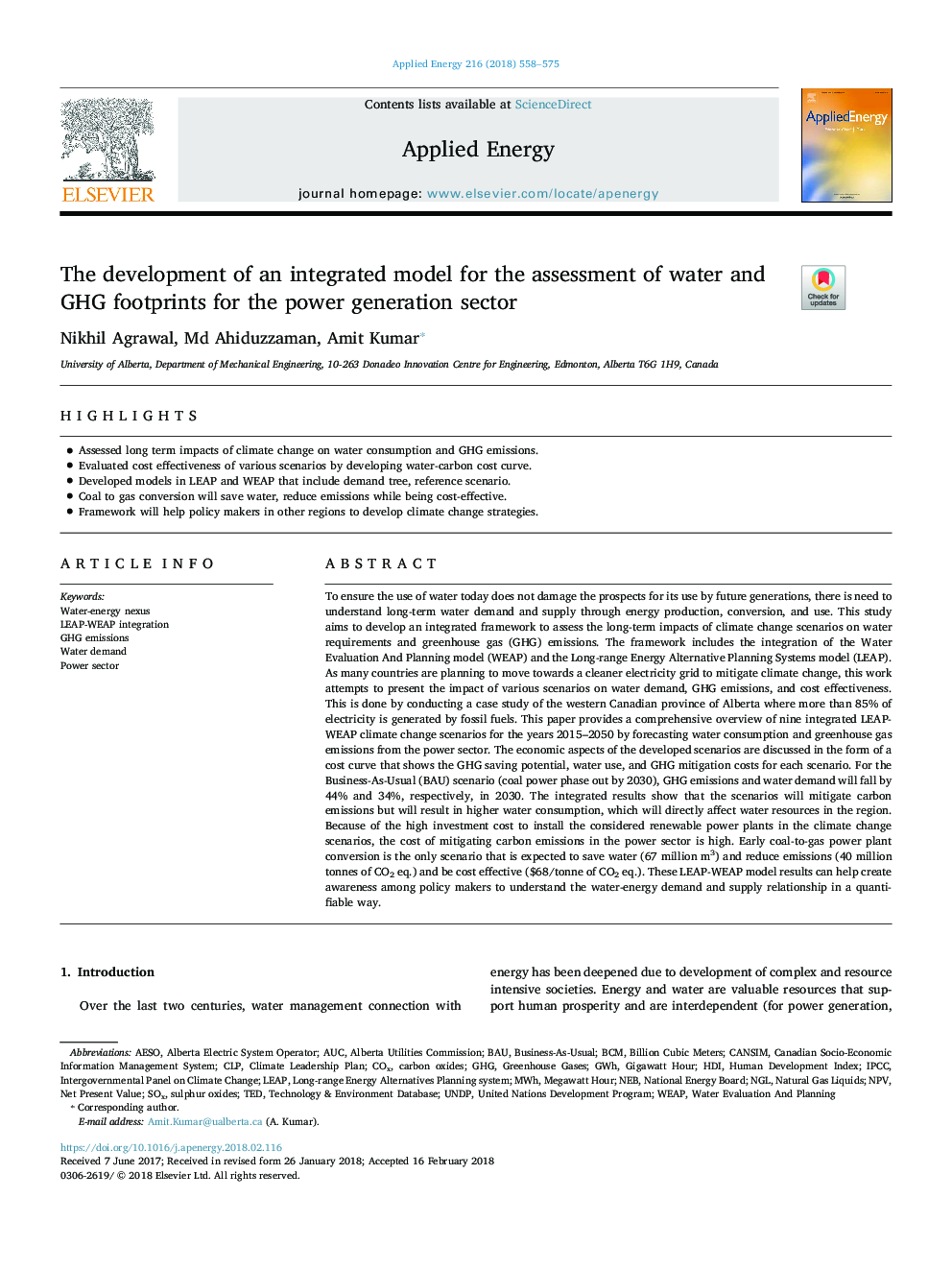| کد مقاله | کد نشریه | سال انتشار | مقاله انگلیسی | نسخه تمام متن |
|---|---|---|---|---|
| 6680611 | 1428074 | 2018 | 18 صفحه PDF | دانلود رایگان |
عنوان انگلیسی مقاله ISI
The development of an integrated model for the assessment of water and GHG footprints for the power generation sector
ترجمه فارسی عنوان
توسعه یک مدل یکپارچه برای ارزیابی اثرات آب و گازهای گلخانه ای برای بخش تولید برق
دانلود مقاله + سفارش ترجمه
دانلود مقاله ISI انگلیسی
رایگان برای ایرانیان
کلمات کلیدی
COXNPVAESONational Energy BoardGWHUNDPNGLWEAPTEDmwhNEBLEAPHDIGHGIPCCCLPBCMAUC - AUCBaU - BAUSOx - SOXWater-energy nexus - آب و انرژی ناسازگاریnet present value - ارزش خالص فعلیGHG emissions - انتشار گازهای گلخانه ایCarbon oxides - اکسید کربنSulphur oxides - اکسید گوگردPower sector - بخش برقUnited Nations Development Program - برنامه توسعه سازمان ملل متحدWater demand - تقاضای آبmegawatt hour - ساعت مگاواتLong-range Energy Alternatives Planning System - سیستم برنامه ریزی جایگزین انرژی طولانی مدتHuman Development Index - شاخص توسعه انسانیNatural gas liquids - مایعات گاز طبیعیbillion cubic meters - میلیارد متر مکعبIntergovernmental Panel on Climate Change - هیات بین دولتی در مورد تغییرات اقلیمیBusiness-As-Usual - کار طبق معمولGreenhouse gases - گازهای گلخانه ایGigawatt hour - یک گیگاوات ساعت
موضوعات مرتبط
مهندسی و علوم پایه
مهندسی انرژی
مهندسی انرژی و فناوری های برق
چکیده انگلیسی
To ensure the use of water today does not damage the prospects for its use by future generations, there is need to understand long-term water demand and supply through energy production, conversion, and use. This study aims to develop an integrated framework to assess the long-term impacts of climate change scenarios on water requirements and greenhouse gas (GHG) emissions. The framework includes the integration of the Water Evaluation And Planning model (WEAP) and the Long-range Energy Alternative Planning Systems model (LEAP). As many countries are planning to move towards a cleaner electricity grid to mitigate climate change, this work attempts to present the impact of various scenarios on water demand, GHG emissions, and cost effectiveness. This is done by conducting a case study of the western Canadian province of Alberta where more than 85% of electricity is generated by fossil fuels. This paper provides a comprehensive overview of nine integrated LEAP-WEAP climate change scenarios for the years 2015-2050 by forecasting water consumption and greenhouse gas emissions from the power sector. The economic aspects of the developed scenarios are discussed in the form of a cost curve that shows the GHG saving potential, water use, and GHG mitigation costs for each scenario. For the Business-As-Usual (BAU) scenario (coal power phase out by 2030), GHG emissions and water demand will fall by 44% and 34%, respectively, in 2030. The integrated results show that the scenarios will mitigate carbon emissions but will result in higher water consumption, which will directly affect water resources in the region. Because of the high investment cost to install the considered renewable power plants in the climate change scenarios, the cost of mitigating carbon emissions in the power sector is high. Early coal-to-gas power plant conversion is the only scenario that is expected to save water (67 million m3) and reduce emissions (40 million tonnes of CO2 eq.) and be cost effective ($68/tonne of CO2 eq.). These LEAP-WEAP model results can help create awareness among policy makers to understand the water-energy demand and supply relationship in a quantifiable way.
ناشر
Database: Elsevier - ScienceDirect (ساینس دایرکت)
Journal: Applied Energy - Volume 216, 15 April 2018, Pages 558-575
Journal: Applied Energy - Volume 216, 15 April 2018, Pages 558-575
نویسندگان
Nikhil Agrawal, Md Ahiduzzaman, Amit Kumar,
